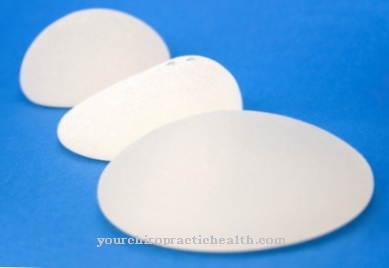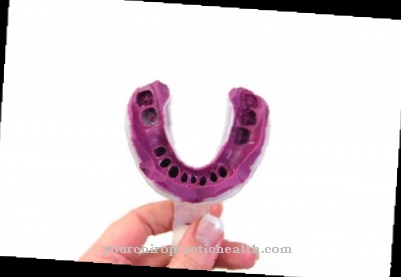Interdental wedges are used for dental fillings with plastic filling materials such as plastic or amalgam and are used in this context to precisely adapt and shape the filling to be applied. The wedges have a claw shape and are flexible enough to lie exactly around the tooth to be filled. At the ends they have contacts, the closure of which prevents the filling material from spreading into the interdental space.
What is an interdental wedge?

Tooth fillings are used to repair defects in the tooth area. With every type of tooth filling, filling material is introduced into the defect. When it comes to fillings, dentistry differentiates between plastic filling materials and inlay fillings. The latter correspond to the so-called inlays made of ceramic or metal. Plastic filling materials, on the other hand, include substances such as amalgam or plastic.
Especially when using plastic filling materials, dentistry uses the so-called interdental wedge. "Interdental" literally means "interdental space" or "between the teeth". As a dental aid, the interdental wedge is used to keep the interdental space free of filling compound and prevent it from escaping into the interdental area. In addition, the transition from the tooth surface to the filling is smooth and inconspicuous thanks to the interdental wedge.
Shapes, types & types
Interdental wedges are made of either wood or plastic. Plastic has the advantage of being extremely robust. In addition to their protective properties, wooden wedges often have a hemostatic effect that the plastic wedge lacks.
Interdental wedges are available in a transparent design, but also in striking colors. The wedges differ from one another primarily in their flexibility and softness. Especially in patients with sensitive gums, the interdental wedge must be as soft as possible so as not to cause irritation or injuries.
On the other hand, flexibility is crucial so that the wedges can be placed as precisely as possible around the tooth to be filled. Resistance to natural oral flora plays a decisive role in both the wood and plastic variants. Interactions between the materials used and the biological environment are excluded in extensive tests to ensure that the wedges can be used without hesitation in contact with the human body. The interdental wedges that are most frequently used are made of polymer. Maple wood variants are a popular alternative.
Structure & functionality
Interdental wedges are triangular wedges made of mostly highly flexible material, which at first glance look like claws. Most of the variants are bent counter-clockwise. At both ends, the wedges have contacts that the doctor connects after moving around the tooth to be filled. With most wedges, the rest of the rod can be twisted off with a rotation of 360 degrees so that the tooth is finally in a protective flap that is precisely adapted to it. In many cases, the wedges have a more or less structured surface that reflects the light and is easier to find.
Interdental wedges are placed around the tooth to be filled by the dentist when preparing a plastic filling and joined in this position at the designated contact points. Only after the filling has hardened are the aids removed.
Some interdental wedges have a raised plate in the middle section. This type of interdental wedge is mainly used for drilling and protecting the adjacent tooth surfaces from damage by the drill.
In the case of interdental wedges for fillings, the wedge presses the matrix band to contour the interdental spaces close to the tooth hole. During the filling process, the filling material cannot escape into the gingival pocket in the interdental space. The hardened filling has a smooth transition to the tooth surface area and hardly stands out from it.
You can find your medication here
➔ Medicines against tartar and tooth discolorationMedical & health benefits
Interdental wedges are used for all plastic fillings. Before a filling is placed, the dentist removes carious components from the diseased tooth. To do this, he grinds the tooth and opens it. Often a cavity is created, which is then filled with the tooth filling. When this cavity is created, the interdental wedges are applied to plastic fillings.
Plastic fillings are made of amalgam or plastic. Amalgam is a plastic material based on metal that is one of the alloys and thus corresponds to a mixture of metals and mercury. Gamma-2-free silver amalgams in particular are used today, as they guarantee the best workmanship, high resistance and the edge of the filling.
Plastic fillings are now used far more frequently than amalgams. These plastic filling materials are often referred to as composites and correspond to compounds of inorganic filling bodies with polymerizable plastic.
The tooth to be filled must be etched before processing so that there is a secure bond between the plastic filling and the tooth. The filling material is cured with UV light. Unlike amalgam fillings, plastic fillings are less resistant to abrasion and less pressure-resistant. In the area of the front teeth in particular, however, they offer the great advantage that they do not affect the tooth area cosmetically and can hardly be distinguished from the real tooth substance.
With both types of fillings, the interdental wedge ensures that the filler material hardens in the intended shape. The dental aid prevents the material from spreading into the interdental space and thus protects both the other teeth and the patient's gums. The interdental wedge thus takes on the role of an adapting and shaping element for all plastic fillings.

























.jpg)


